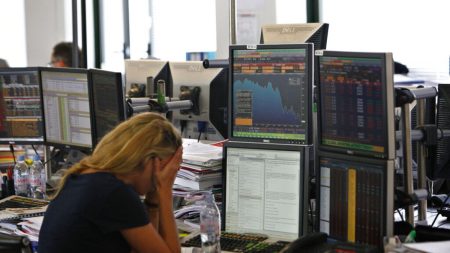Paragraph 1: Inflation Data Fuels Market Optimism and Record Nasdaq High
US stock markets experienced a surge, particularly the Nasdaq Composite, which reached a record high, following the release of November’s inflation data. The data, showing a modest rise in inflation, cemented market expectations that the Federal Reserve would likely cut interest rates at its upcoming meeting. This anticipated rate cut, viewed as a supportive measure for the economy, fueled investor confidence and drove stock prices higher. Consumer prices rose 2.7% year-over-year, a slight increase from October’s 2.6%. Core inflation, excluding volatile food and energy prices, remained steady at 3.3%. Month-over-month, both headline and core inflation ticked up 0.3%.
Paragraph 2: Fed Rate Cut Highly Anticipated; Inflation Remains a Key Consideration
The November inflation figures represent the final significant data point for the Federal Reserve to consider before its December meeting. Market analysts widely predict a quarter-point rate cut, with futures pricing indicating a 98% probability. While the slight uptick in inflation might have caused some concern, it wasn’t substantial enough to deter expectations of a rate reduction. Experts generally viewed the inflation data as aligned with the Fed’s objectives, reinforcing the belief that the central bank would proceed with easing monetary policy. Federal Reserve Chair Jerome Powell had previously hinted at a cautious approach to rate cuts, given the relatively healthy state of the US economy.
Paragraph 3: Economic Backdrop and Wage Growth Influence Fed’s Stance
The Fed’s decision-making process is influenced by various economic factors, including wage growth and overall economic performance. A cooling job market has led to a slowdown in wage growth, moving closer to a level consistent with the Fed’s 2% inflation target. Powell has indicated that he doesn’t consider the current job market a primary driver of inflation. This suggests the Fed may have more room to maneuver on interest rates without risking a resurgence in inflationary pressures. Previously, the Fed had implemented significant rate cuts in September (half-point) and November (quarter-point), bringing its benchmark rate down to 4.6% from a four-decade high of 5.3%.
Paragraph 4: Inflationary Pressures and Potential Challenges to the Fed’s Objectives
Despite a substantial decline from its peak of 9.1% in June 2022, inflation remains a concern, with average prices still approximately 20% higher than three years ago. This persistent price increase represents a significant challenge for policymakers and contributes to public discontent. The Fed’s traditional approach is to cut rates to stimulate the economy and maximize employment while carefully managing inflation. However, the current US economy appears robust, with healthy consumer spending contributing to brisk growth of 2.8% in the third quarter. This strong economic performance has led some analysts to question the necessity of further rate cuts.
Paragraph 5: Trade Policy Uncertainty and Long-Term Inflation Outlook
A potential complication for the Fed’s inflation management efforts is the uncertainty surrounding trade policy. Threats of tariffs on imports, particularly from China, raise concerns about potential inflationary consequences. Economists have projected that such tariffs could lead to higher core inflation by the end of 2025 compared to a scenario without tariffs. This external factor adds another layer of complexity to the Fed’s efforts to maintain price stability. The central bank is attempting to "recalibrate" its interest rate to a level more appropriate for the current economic environment and subdued inflation.
Paragraph 6: Market Reaction to Inflation Data and Nasdaq’s Milestone
Investor enthusiasm, fueled by the expectation of Fed rate cuts and positive economic data, has propelled stock market indices to record highs throughout the year. The latest inflation data further boosted this positive sentiment, particularly in the technology sector. Big Tech stocks led the market rally, driving the Nasdaq Composite above the 20,000 mark for the first time. While the Dow Jones Industrial Average experienced a slight dip, the S&P 500 continued its upward trend, nearing its all-time high. Tesla was a notable performer, its stock price surging above $420, a symbolically significant level for the company. The bond market also reacted, with yields on Treasury bonds rising, reflecting the market’s anticipation of future interest rate movements and economic conditions.














